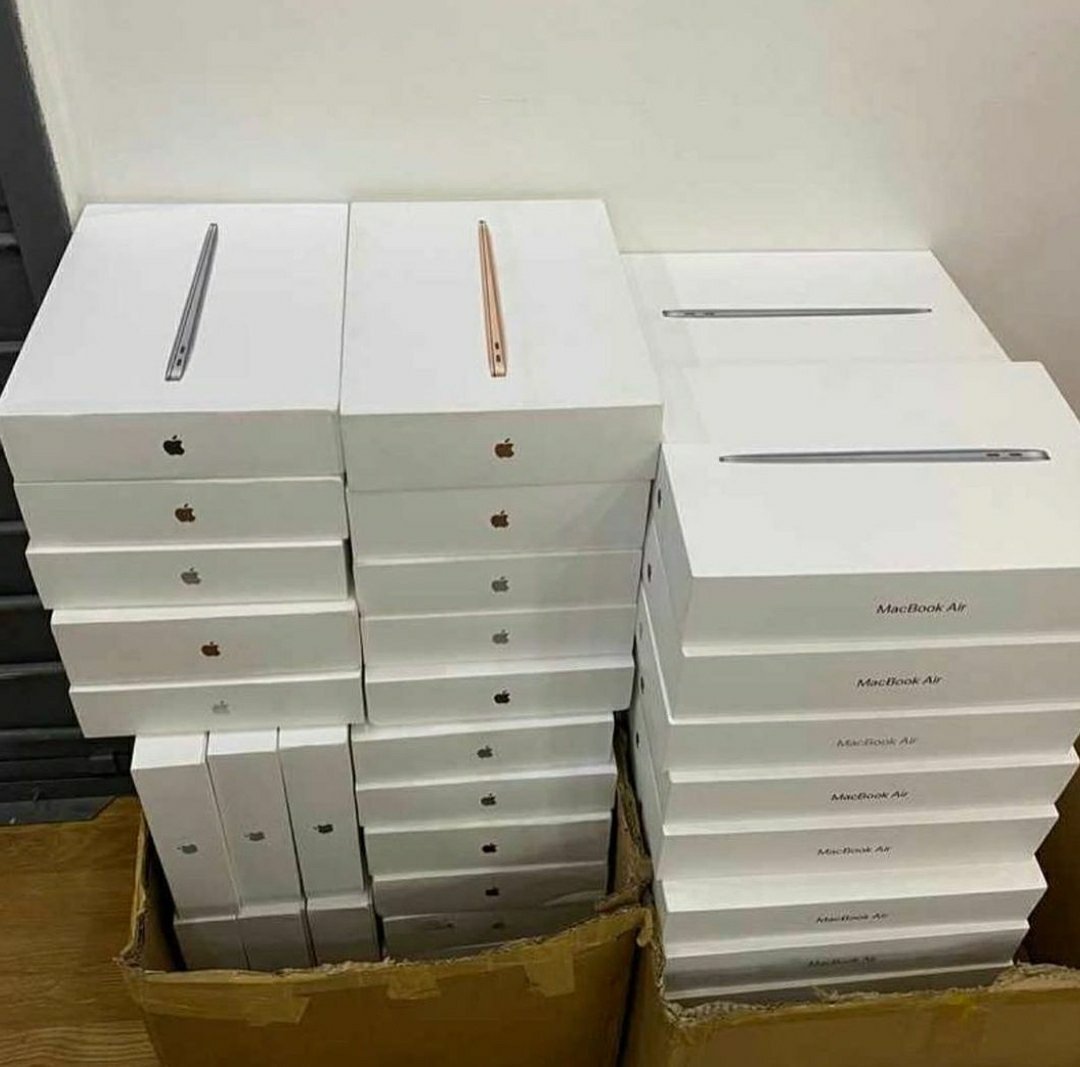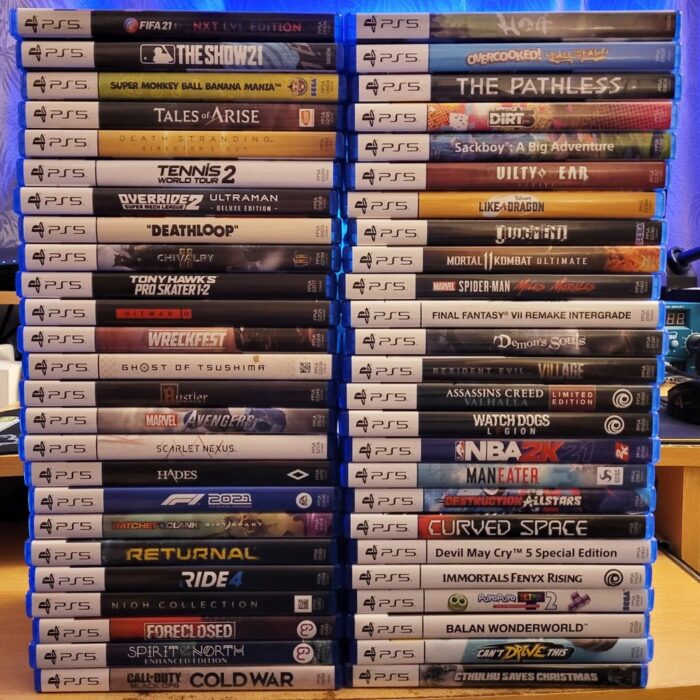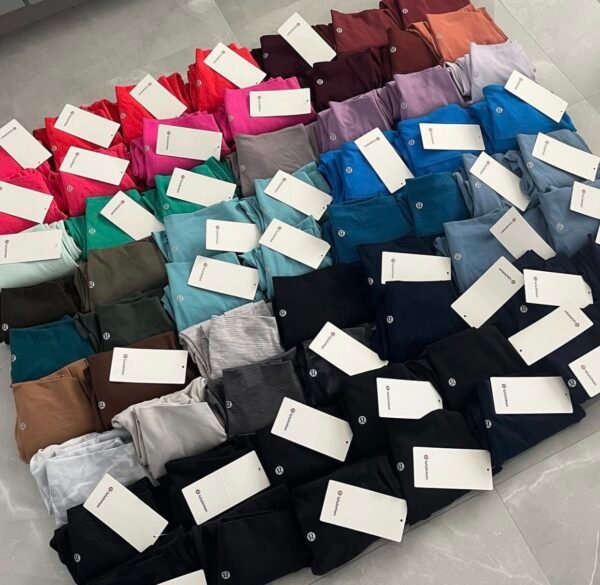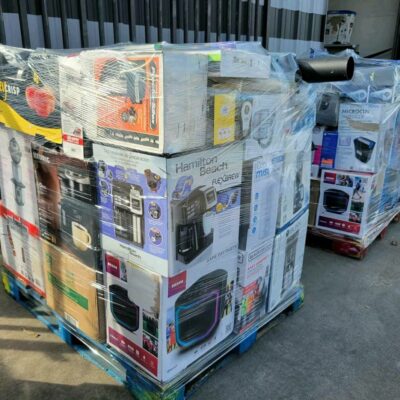Description
The new MacBook Air borrows a lot of its design and shape from the MacBook Pro 14 and 16 that debuted late last year. It’s symmetrical and squared off, with a more brutalist presentation than prior MacBook Air models.
Yet it’s remarkably thin — just a smidge over 11 millimeters — and that thinness is immediately noticeable when you open the lid and start typing on it. It’s also noticed whenever you slot it into a bag or carry it around. The older MacBook Air’s tapered shape had less visual weight and may look thinner, but the new model is indeed slimmer than its predecessor.
It’s also slightly lighter, at 2.7 pounds vs. the older model’s 2.8. That’s not a huge difference, and the Air is far from the lightest computer you can buy, but it does make it extremely portable and easy to tote around wherever I need it.
/cdn.vox-cdn.com/uploads/chorus_asset/file/23759760/bfarsace_190101_5333_0007.jpg)
In all, I’m a fan of this new design. It’s modern and refreshing and functionally works very well. Some might miss the wedge shape, but I’m not one of them. This new Air is a beautiful computer, and I think this design will work well for the next five (or possibly more!) years or so until Apple updates it again.
Unless you get the new Midnight color. This new color is gorgeous out of the box, with a deep blue-black finish that can change depending on the light. But as soon as you pick it up, it gets covered in greasy fingerprints that are a chore to clean off. It really mars what is otherwise a striking finish. Apple’s far from the only company to face this problem with dark aluminum — Razer’s laptops have been fingerprint magnets for years — but it’s enough of an issue that I wouldn’t buy the Midnight model. I’ve also had the opportunity to test a model in the silvery-gold Starlight color, and its surface stays fingerprint-free.
Despite that thinner profile and lighter weight, the new Air is no less solid or well-built than before. The chassis is stiff, the lid has next to zero flex, and it still can be opened with a single finger. Apple remains at the top of the field when it comes to build quality and fit and finish, and the new Air is no exception.
/cdn.vox-cdn.com/uploads/chorus_asset/file/23759754/bfarsace_190101_5333_0001.jpg)
In addition to its shape, the new Air borrows the resurrected MagSafe charging connector from the MacBook Pro 14 and 16, which lets you charge the laptop without worrying that tripping over the cable will send the computer tumbling to the floor. It even comes with a color-matched braided cable in the box, something you don’t get on the more expensive Pro models.
Apple’s also giving you a choice when it comes to chargers. The base model Air comes with the familiar 30W brick that’s been around for years. But the step-up models provide a choice between a new compact 35W charger with two USB-C ports or a larger and more powerful 67W brick borrowed from the MacBook Pro line. That larger brick can charge the Air’s battery 50 percent in 30 minutes.
/cdn.vox-cdn.com/uploads/chorus_asset/file/23759766/bfarsace_190101_5333_0012.jpg)
/cdn.vox-cdn.com/uploads/chorus_asset/file/23759765/bfarsace_190101_5333_0011.jpg)
My review units came with the 35W charger, and while it’s compact and portable, I’d personally opt for the more powerful charger. In testing, the 35W brick only charged the Air 25 percent in 30 minutes with the lid closed — half the speed of the 67W brick — and those speeds were further slowed down when I plugged my iPhone into the charger’s other port. I really wish Apple had just put two ports on the more powerful brick, though there are plenty of cheaper third-party options with more power and more ports than Apple’s options, and they work just fine with the Air’s MagSafe cable.
Thanks to that MagSafe port, you effectively get an extra USB-C port over the older model. Instead of having to use one port to charge the computer and the other for peripherals (though you can still charge over USB-C if you want), you can use both Thunderbolt-capable ports for accessories.
But it’s still only two ports, and both are on the left-hand side. It’d have been great to have ports on the right side, too, and while it’s perhaps a pipe dream at this point, a USB-A port is still very useful for a lot of accessories. You’ll have to keep that USB-C hub in your bag after all.
Lastly, Apple is still limiting the new Air to a single external display, so if you want to plug your laptop into more than one monitor at a time, you’ll need to step up to a 14-inch MacBook Pro (which supports up to four external displays) or figure out some other workaround.
/cdn.vox-cdn.com/uploads/chorus_asset/file/23759757/bfarsace_190101_5333_0004.jpg)
The new Air’s keyboard has also been lifted from the 14-inch MacBook Pro. It has a full-height function row and Touch ID and fortunately doesn’t have the questionably useful Touch Bar that’s still inexplicably available on the latest 13-inch MacBook Pro M2.
The keys have adequate travel and are comfortably spaced. They are also much quieter than older MacBook models that had the dreaded butterfly keyboard. If you’re upgrading from an older Intel-based MacBook, the keyboard might be the improvement you appreciate most just because the butterfly keyboard on those older models was that bad.
Similarly, the trackpad isn’t hugely different from older models, though it’s slightly wider. It functionally works the same, though, and has excellent scrolling, gesture support, and palm rejection.
In an interesting change, the new Air’s deck lacks the speaker grills that are found on virtually every other MacBook model. Instead, the speakers are integrated between the keyboard and the display for a cleaner look.
/cdn.vox-cdn.com/uploads/chorus_asset/file/23759756/bfarsace_190101_5333_0003.jpg)
/cdn.vox-cdn.com/uploads/chorus_asset/file/23759763/bfarsace_190101_5333_0010.jpg)
The new speaker system consists of two tweeters and two woofers and supports Apple’s Spatial Audio technology. Compared to the M1 Air, the new speakers are slightly fuller and less echo-y sounding, especially at full volume. But the difference isn’t huge, and they aren’t on par with the bassy thumpers that come on the 14 and 16-inch MacBook Pros. Still, the speakers remain far ahead of other laptops and sound great for video calls, watching TV shows and movies, listening to music, YouTube, or whatever else you might need to listen to on a thin and light computer like this.
The last design point worth noting here is the branding. Compared to prior models, the Apple logo on the new Air is roughly 30 percent bigger than before. It’s not something you notice unless you put it side by side with an older model, but it’s certainly there. Ironically, that’s the only branding on the laptop — it doesn’t actually say MacBook Air anywhere on it. It’s not below the display. It’s not on the bottom panel. It’s nowhere. You just have to know that this is a MacBook Air and not some other computer. Maybe Apple will change the name of this model to just a plain MacBook at some point, and then it won’t have to make any changes to the exterior when it does.
/cdn.vox-cdn.com/uploads/chorus_asset/file/23759755/bfarsace_190101_5333_0002.jpg)
Along with the new design comes a brand new display. The Air’s screen is a little bigger than before — 13.6 inches vs. 13.3 — but most of that size is gained vertically since it’s a little taller. The bezels around the screen have been trimmed, and the corners of the screen are now rounded, as well, providing a more modern look than before.
The new display is brighter, too — Apple claims 500 nits vs. 400 of the old one; it rated 434 in my tests — which makes it easier to use outdoors and just more comfortable to look at all day long. In typical Apple fashion, it scores well on color accuracy and reproduction metrics, covering 100 percent of the SRGB spectrum, 84 percent of AdobeRGB, and 95 percent of P3.
The brightness isn’t as impressive as what you get with the Mini LED screens on the higher-end MacBook Pro models, and the black levels and overall punchiness can’t match those displays. It also doesn’t have the ProMotion higher refresh rate for smoother scrolling that those models benefit from.
But the new screen is a marked improvement over what was available before, and it’s better than the one that comes on the 13-inch MacBook Pro. It’s roomier, less cramped, and just more comfortable to work on, especially if you spend a lot of time in web browsers and documents like I do.
Unfortunately, just like the 14- and 16-inch MacBook Pro models, the new Air now has a notch in its display. And just like on those other models, the notch presents some real issues when I’m using the computer.
/cdn.vox-cdn.com/uploads/chorus_asset/file/23759762/bfarsace_190101_5333_0009.jpg)
It’s not that the notch is particularly ugly or distracting — it’s that it completely messes up how I use the menu bar when I’m using a Mac. I happen to like menu bar apps a lot, and I’ve got a ton of them for various things like clocks, calendars, to-do lists, system monitoring, and other utilities. The notch’s position and size mean that most of the time, my menu bar apps just don’t show up like they are supposed to, and I can’t even access them. Ironically, there are third-party menu bar apps that can make this workable — the latest version of Bartender solves a lot of my issues — but it’s annoying that a third-party app is necessary to make Apple’s own design usable. I’d have much rather had a slightly thicker top bezel than deal with the annoying notch.
Fortunately, the camera inside that notch is the same 1080p unit that’s in the larger Pro models, and it’s much improved over the crappy 720p camera that was in the older Air and the new 13-inch MacBook Pro. It’s sharper, with more detail, better color and contrast, and just a better-looking image overall. Combined with the Air’s three-mic array, the new camera works great for video calls. The lousy camera was the one thing that kept the M1 Air from getting a perfect score, so I’m very happy to see it has been addressed.


Inside all of that new design is Apple’s latest M2 processor, which is also found in the 13-inch MacBook Pro we recently reviewed. Apple claims this new chip provides up to 18 percent better multi-core performance over the M1, with up to 35 percent faster graphics.
Apple MacBook Air M2 (2022) Specs
- 13.6-inch, 2560 x 1664 display
- Apple M2 chip (8c CPU / 8c GPU, configurable to 10c GPU)
- 8GB RAM (configurable to 24GB)
- 256GB storage (configurable to 2TB)
- Two Thunderbolt 4 USB-C ports
- MagSafe 3 charging
- 3.5mm headphone jack
- Four-speaker sound system with three-mic array
- Magic Keyboard with full height function row and Touch ID
- 1080p webcam
- 802.11ax Wi-Fi 6, Bluetooth 5.0
- 0.44in x 11.97in x 8.46in (11.3mm x 30.41cm x 21.5cm)
- 2.7 pounds (1.24kg)
The base model has an eight-core CPU and eight-core GPU, 8GB of RAM, and 256GB of storage, while the $1,499 step-up model that I have been able to test comes with a 10-core GPU and 512GB of storage. You can even equip up to 24GB of RAM and 2TB of storage, provided you don’t mind spending two and half thousand dollars on a MacBook Air. Most people are likely to be fine with the $1,499 configuration, though you might want to spring another $200 for 16GB of RAM to ensure the computer lasts longer, especially if you multitask a lot.
All of those configuration options add up to a noticeably more expensive computer than before, and there’s very good reason to avoid the base model entirely. Apple confirmed to me that just like the base model of the 13-inch MacBook Pro M2, the base Air’s 256GB of storage is stored on a single NAND chip instead of two like on the M1 models or new M2 models with 512GB or more storage. That can make the storage perform half as fast as even the older base M1 Air’s and will slow things down whenever you try to copy large files around or multitask enough to max out the 8GB of RAM and force it to use swap memory. It’s a disappointing regression and really means the only models I feel comfortable recommending start at $1,500.
We were able to test a base model Air with 8GB of RAM and 256GB of storage and sure enough, the storage is a lot slower than the prior M1 Air or M2 models with 512GB. Unless you’re able to get the base model M2 Air on sale for a sizable discount, I’d stay away from it.
Apple spokesperson Michelle Del Rio provided the following statement on the matter:
Thanks to the performance increases of M2, the new MacBook Air and the 13-inch MacBook Pro are incredibly fast, even compared to Mac laptops with the powerful M1 chip. These new systems use a new higher density NAND that delivers 256GB storage using a single chip. While benchmarks of the 256GB SSD may show a difference compared to the previous generation, the performance of these M2 based systems for real world activities are even faster.
In my benchmark testing, the 512GB M2 Air outguns the M1 model in every test, though the differences aren’t especially stark. But the M2 Air is noticeably slower than the MacBook Pro M2, which has a thicker chassis and a fan to help keep the chip cool under long-running heavy workloads, like a 30-minute Cinebench 23 multi-core benchmark. The Air will quickly throttle back the power it’s sending to the M2 chip and keep its speeds capped in an effort to keep temperatures manageable. Even then, the bottom of the computer gets considerably warm during these tests. The M2 Air’s fanless design is great for normal workloads and makes for a silent computer, but it holds the system back when it comes to more intense workloads.
The M2 Air is faster than the M1 in virtually every test but behind the M2 MacBook Pro
The performance difference shows up in other stress tests, too, like when I ran the PugetBench test in Adobe Premiere Pro or tried to edit and export a lot of high-resolution RAW photos in Adobe Lightroom Classic. The M2 Air scored better on the PugetBench test than the M1 but worse than the M2 MacBook Pro. It also buckled under the pressure of 60-megapixel RAW files from a Sony A7R Mark IV camera when I tried to import and edit them, which is not much different from how an M1 Air behaves with similar tasks.
The M2 Air’s improved graphics are also held back by its thermal design — though it scores better than the M1 Air in things like the Shadow of the Tomb Raider benchmark, it’s not as good as the M2 Pro’s results, despite having the same number of GPU cores.
Though we saw a big regression in performance with our 4K video export test on both the M1 Air and M2 Air in Premiere Pro 22, Adobe has fixed the issue with version 23 and the M2 Air was able to export the five and a half minute clip in roughly real time, about seven percent faster than the M1 Air. That’s not nearly as fast as we’ve seen from the M1 Pro or M1 Max-equipped MacBook Pros or from computers with dedicated graphics cards, but if editing video is only an occasional task for you, then the M2 Air is certainly up for it.





















Reviews
There are no reviews yet.